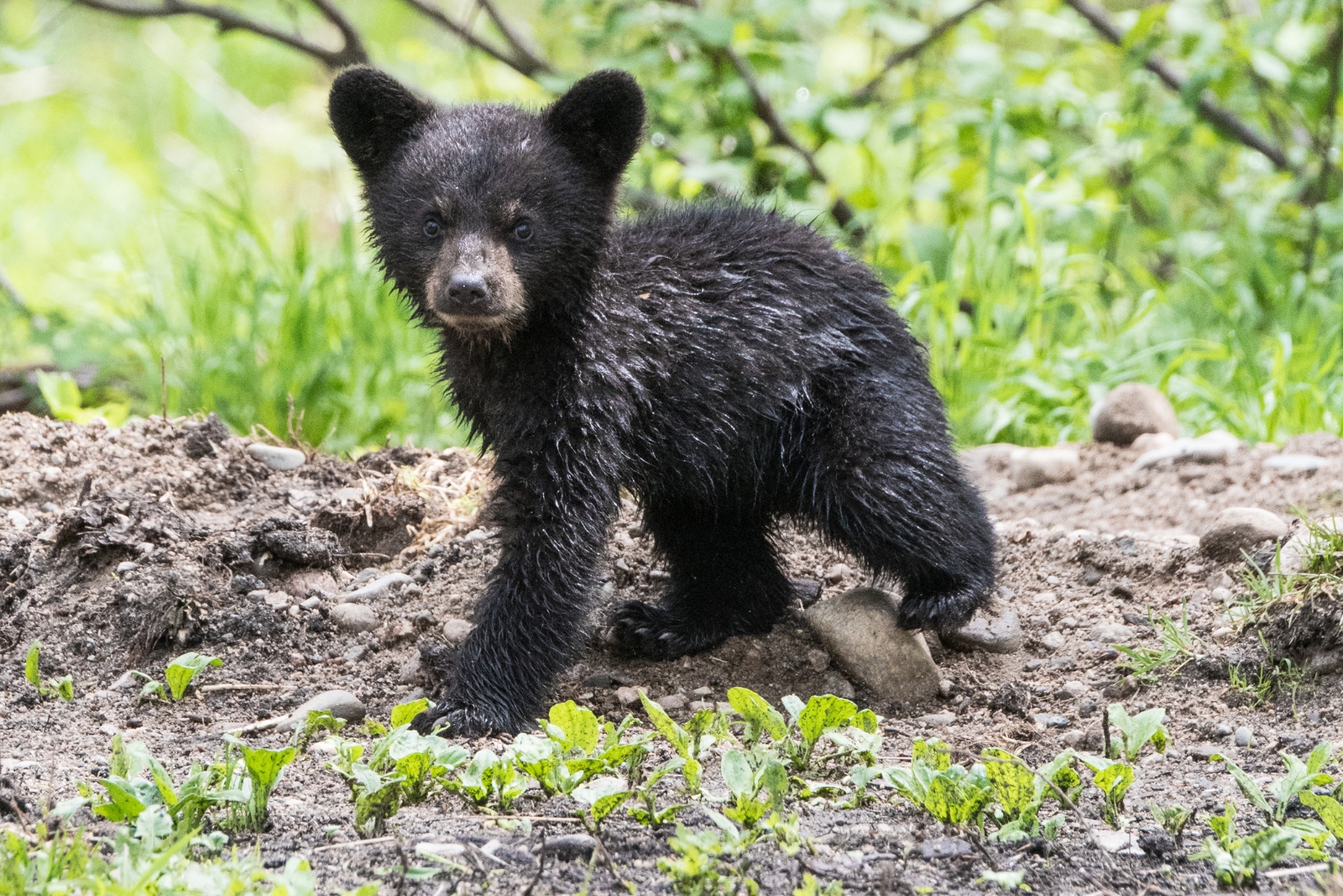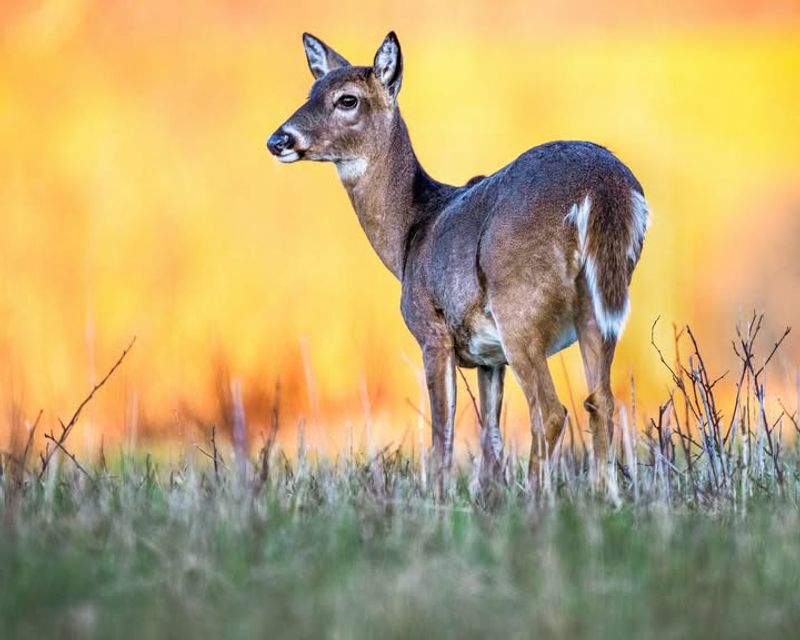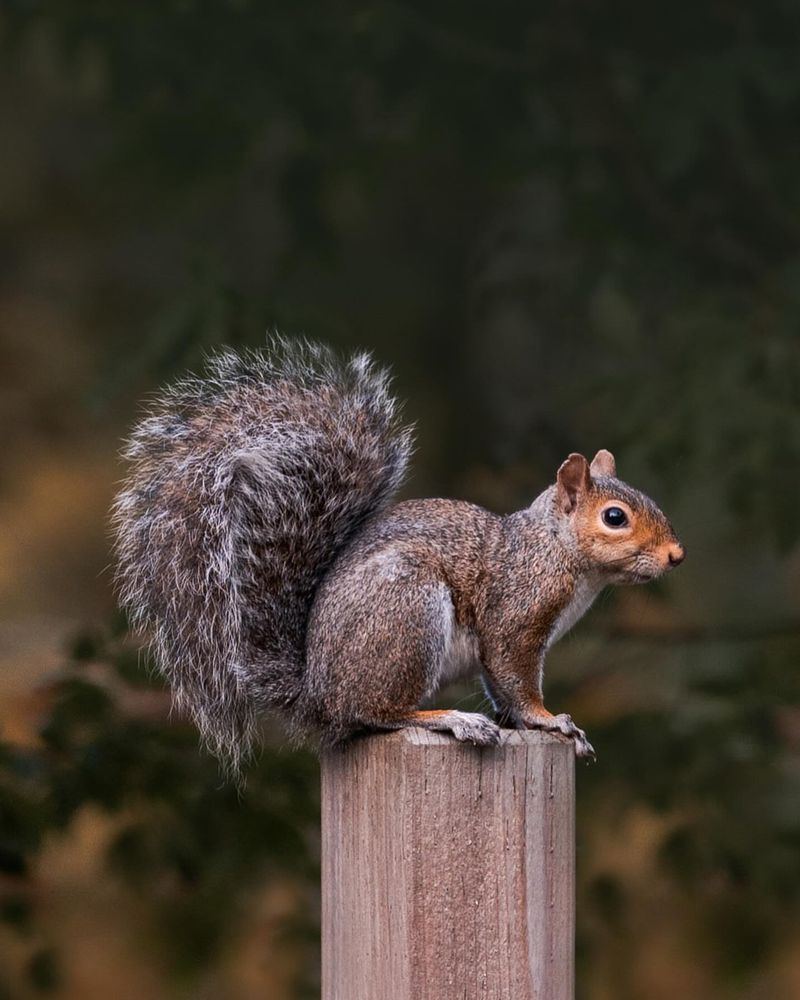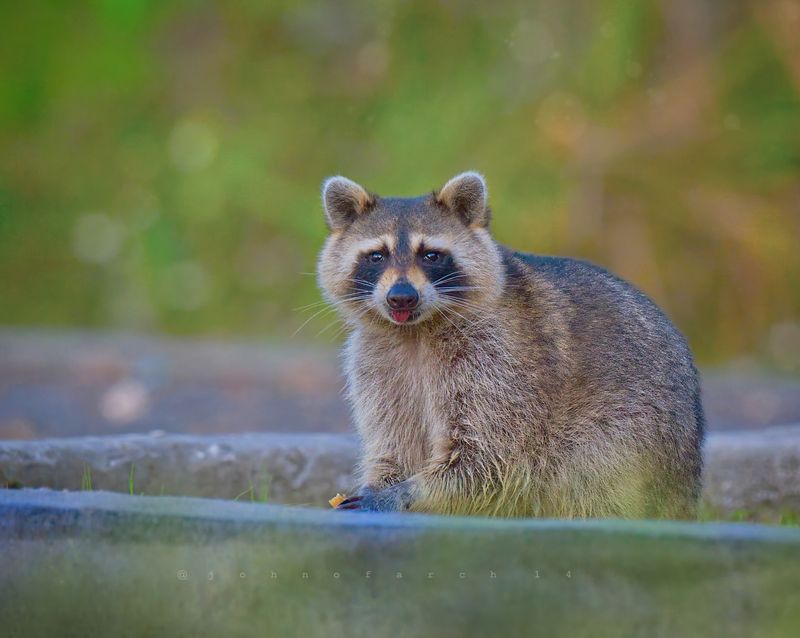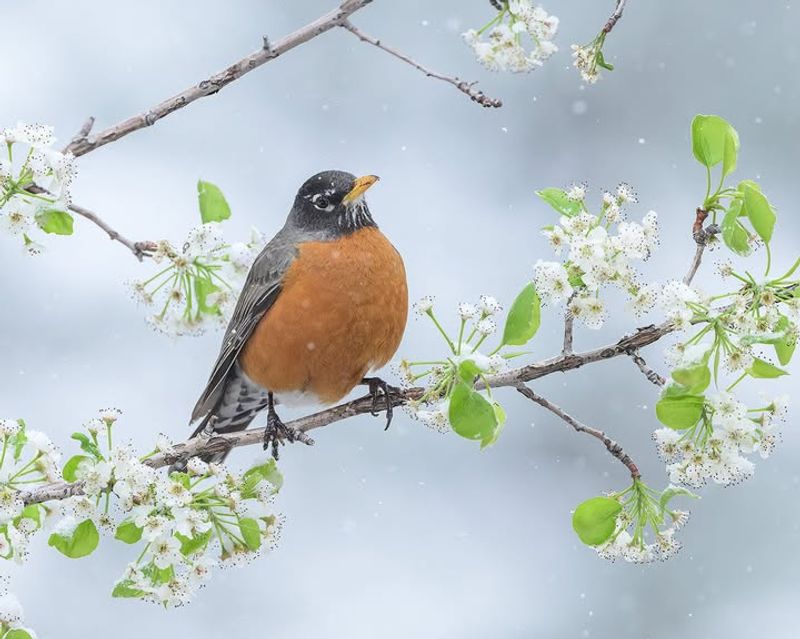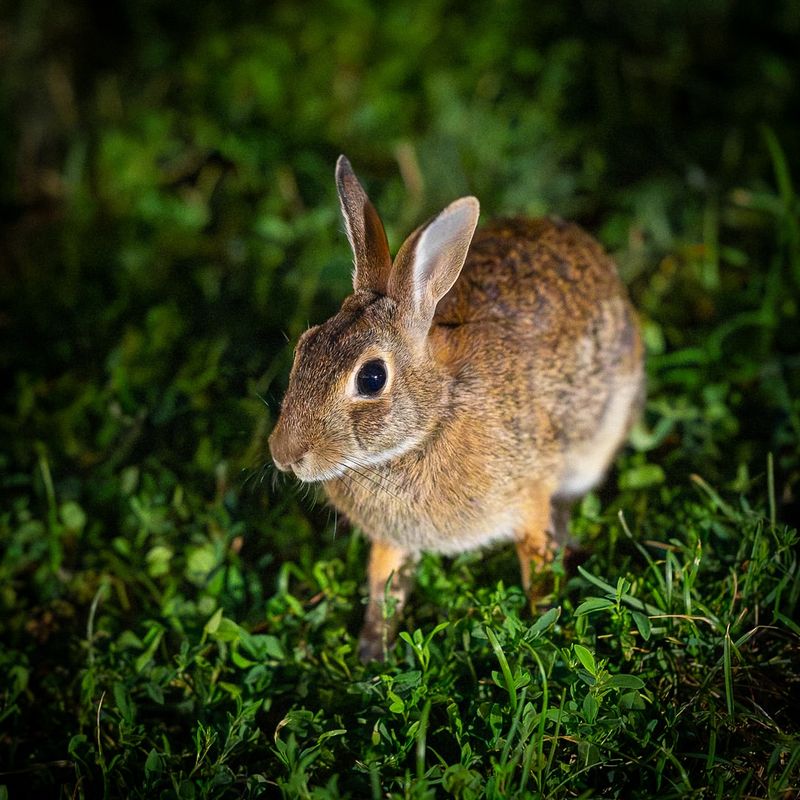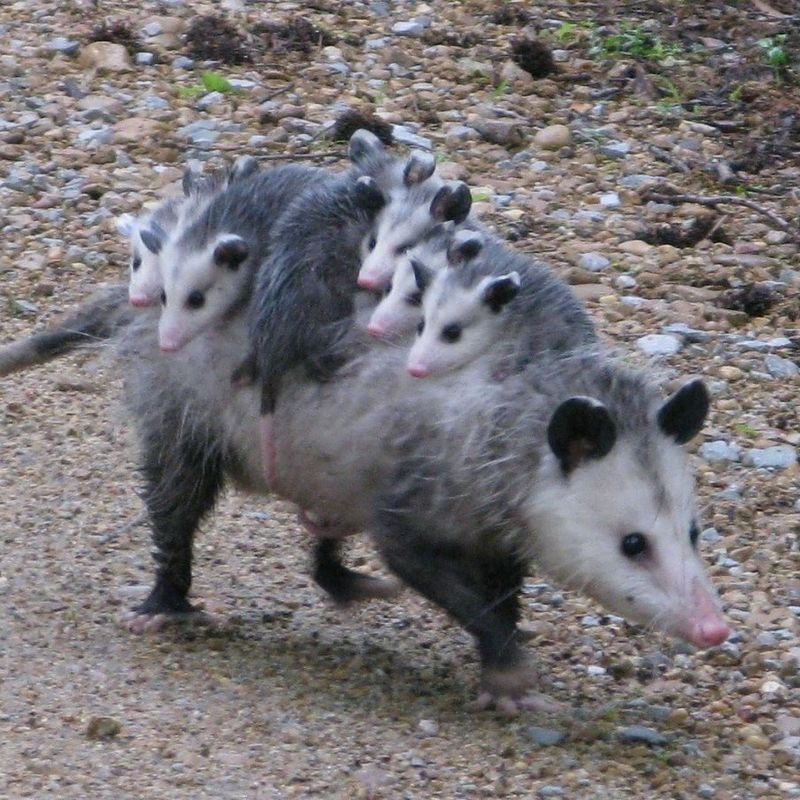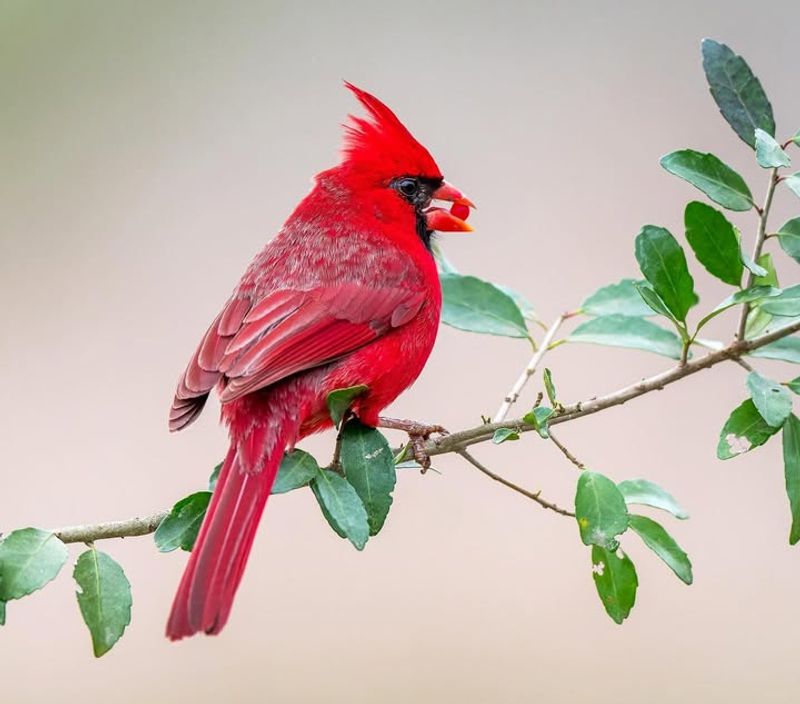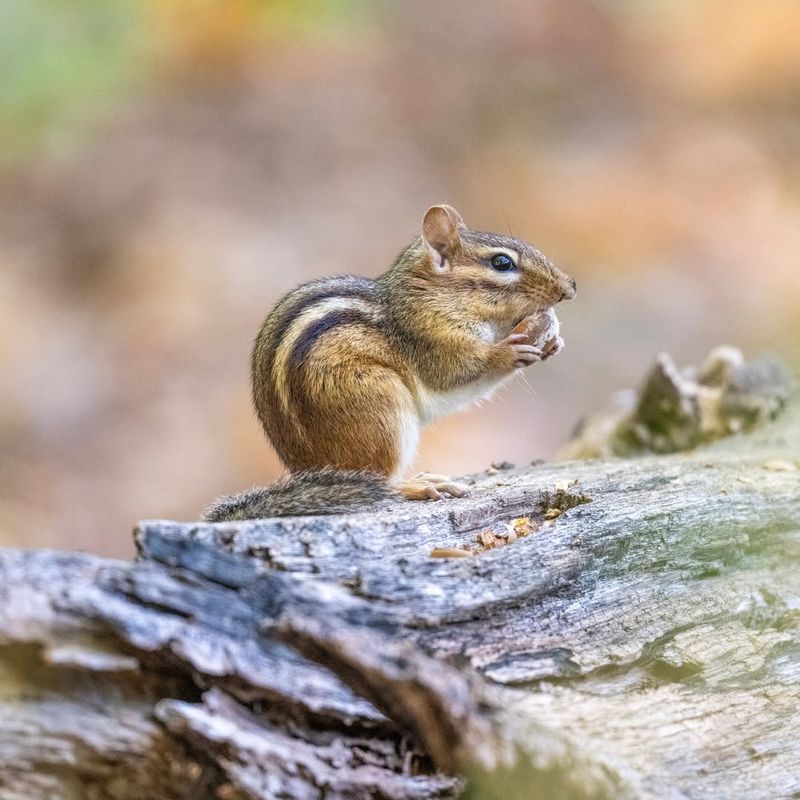New Jersey yards often hold more activity than a quick glance reveals. Quiet movement near fences, soft tracks in soil, or a rustle under shrubs can signal regular visitors that share the space long after sunset.
These animals rarely announce themselves, yet they leave clues for anyone who knows what to watch for. A backyard in this state may support far more wildlife than expected, and the list often surprises new and seasoned homeowners alike.
1. White-Tailed Deer
Spotting a deer munching on your garden plants has become almost normal for New Jersey homeowners. White-tailed deer love suburban areas because they find plenty of food like flowers, vegetables, and shrubs.
They’re most active during dawn and dusk, so that’s when you’ll likely see them. Males grow impressive antlers each year that fall off in winter.
If deer visit your yard frequently, consider planting deer-resistant flowers or installing fencing to protect your favorite plants.
2. Eastern Gray Squirrel
Your New Jersey backyard probably hosts these bushy-tailed acrobats every single day without you even noticing. Eastern gray squirrels are expert climbers who leap between trees and power lines with incredible skill.
They spend their days gathering nuts, seeds, and fruits to bury for winter meals. Squirrels actually forget where they hide many of their snacks, which helps new trees grow.
Watch them carefully and you’ll see their clever problem-solving skills when they raid bird feeders or navigate obstacles.
3. Raccoon
With their bandit masks and clever paws, raccoons are nighttime visitors that often surprise New Jersey homeowners. They’re incredibly smart and can open latches, unscrew jars, and remember solutions to problems for years.
Raccoons eat almost anything, from insects and fish to pet food and garbage. Their front paws are super sensitive and they often wash their food before eating.
Keep trash cans secured with tight lids and don’t leave pet food outside overnight to avoid unwanted raccoon parties.
4. Red Fox
Seeing a flash of red-orange fur dart across your New Jersey yard means a red fox is nearby. Foxes have adapted wonderfully to suburban life and hunt mainly at night for mice, rabbits, and insects.
Their bushy tails help them balance and stay warm during cold winters. Despite their dog-like appearance, foxes are actually more closely related to cats in their hunting style.
Listen for their distinctive screaming calls during mating season in winter, which can sound surprisingly spooky at night.
5. American Robin
That cheerful bird singing early in the morning is probably an American robin welcoming the day. Robins are one of the first birds to start singing at dawn, sometimes even before sunrise.
They hop across lawns searching for earthworms and insects to eat. Many people think robins mean spring has arrived, but some actually stay in New Jersey all winter.
Watch them tilt their heads sideways when hunting—they’re actually looking for worms, not listening for them like many people believe.
6. Eastern Cottontail Rabbit
Nothing says spring quite like spotting a cottontail rabbit hopping through your New Jersey yard at sunset. Eastern cottontails love suburban gardens where they nibble on grass, clover, and vegetable plants.
Their white fluffy tails flash like cotton balls when they run from danger. Baby rabbits are born without fur and stay hidden in shallow ground nests lined with grass and mother’s fur.
If you find a nest, leave it alone—mother rabbits only visit twice daily to avoid attracting predators to their babies.
7. Opossum
America’s only marsupial waddles through New Jersey backyards looking for food each night. Opossums might look a bit scary with their pointy faces and rat-like tails, but they’re actually gentle creatures that rarely bite.
They eat ticks, insects, and dead animals, making them nature’s cleanup crew. When threatened, opossums famously play dead, which isn’t an act—they actually faint from fear.
Baby opossums ride on their mother’s back, clinging to her fur as she searches for food in your yard.
8. Northern Cardinal
Bright red male cardinals are like flying jewels that catch your eye instantly against green trees. Both males and females sing beautiful songs year-round, unlike many bird species where only males sing.
Cardinals mate for life and often stay in the same area throughout the year in New Jersey. They love sunflower seeds at bird feeders and prefer eating close to protective shrubs.
Fun fact: The female cardinal’s tan color isn’t dull—it’s perfect camouflage for protecting her nest and eggs from predators while she sits on them.
9. Groundhog
Groundhogs, also called woodchucks, are chunky rodents that dig extensive burrow systems under New Jersey sheds and porches. They’re vegetarians who love munching on garden vegetables, especially beans, peas, and lettuce.
Despite their reputation for predicting spring on Groundhog Day, they’re actually just looking for mates when they emerge in February. Groundhogs can climb trees and swim, though they prefer staying on solid ground.
Their burrows can have multiple entrances and rooms, creating underground homes that other animals sometimes use later.
10. Black Bear
Yes, black bears really do wander into New Jersey backyards, especially in northwestern counties. Bear sightings have increased as their population grows and they search for easy food sources.
They’re attracted to bird feeders, garbage, pet food, and grills with food residue. Black bears are typically shy and prefer avoiding humans, but they’ll return to places where they find food.
Never approach a bear—make noise, appear large, and back away slowly if you encounter one in your yard unexpectedly.
11. Eastern Chipmunk
Chipmunks zip around New Jersey backyards like tiny race cars, collecting seeds in their expandable cheek pouches. Unlike squirrels who hide food randomly, chipmunks store their treasures in organized underground pantries.
They live in elaborate burrow systems that can extend 30 feet long with multiple chambers for sleeping and storing food. Chipmunks hibernate during winter but wake up occasionally to snack on their stored food.
Their distinctive chirping calls warn other chipmunks about danger, and they can make different sounds for different types of predators approaching.

